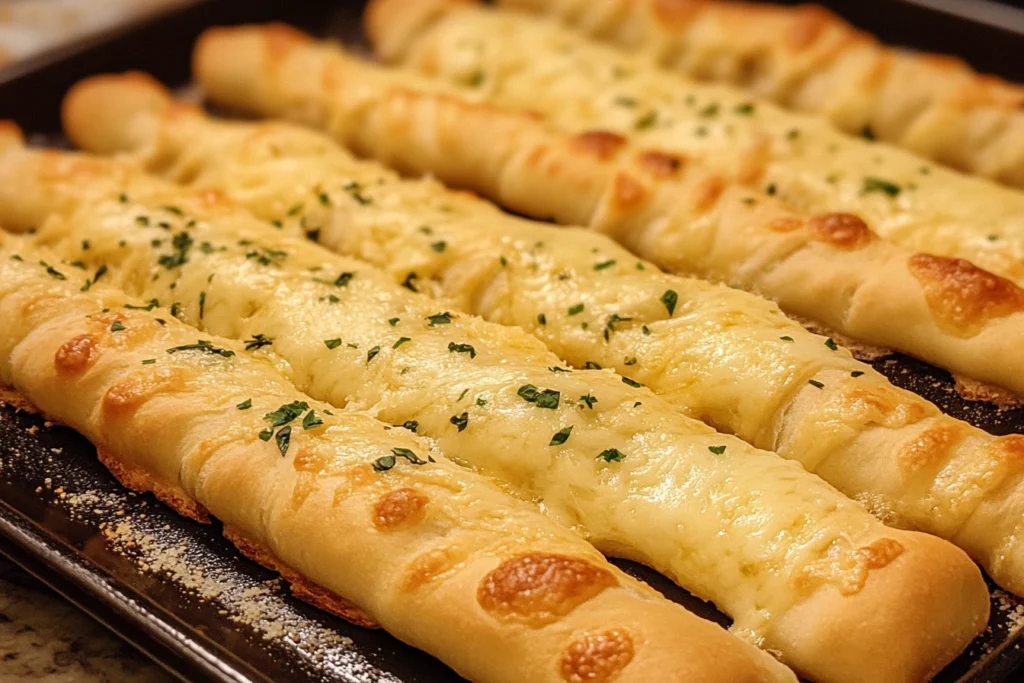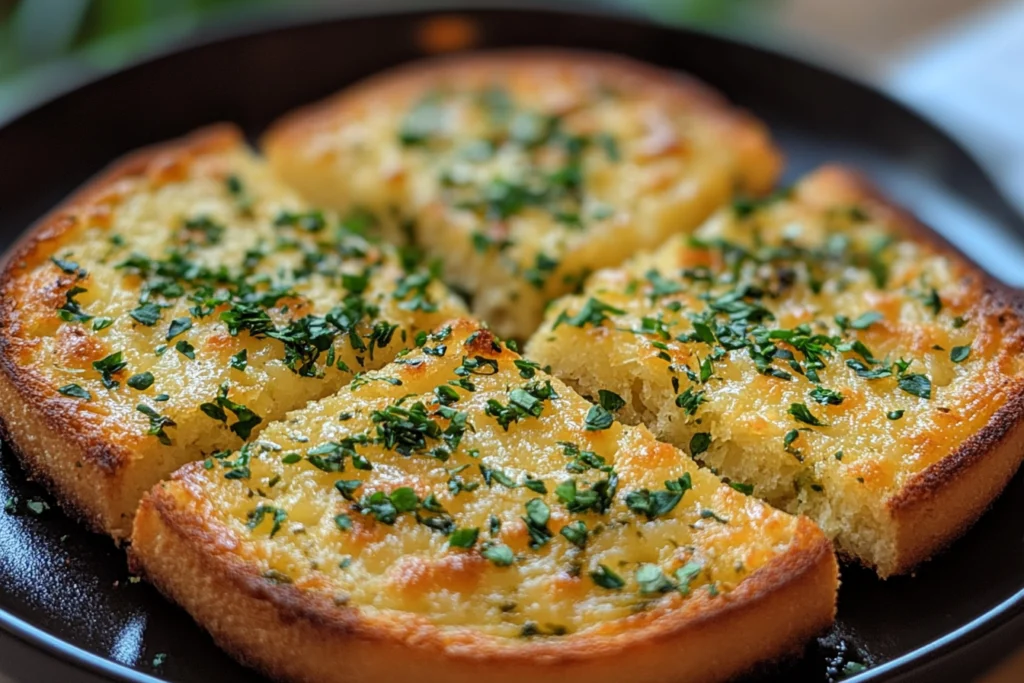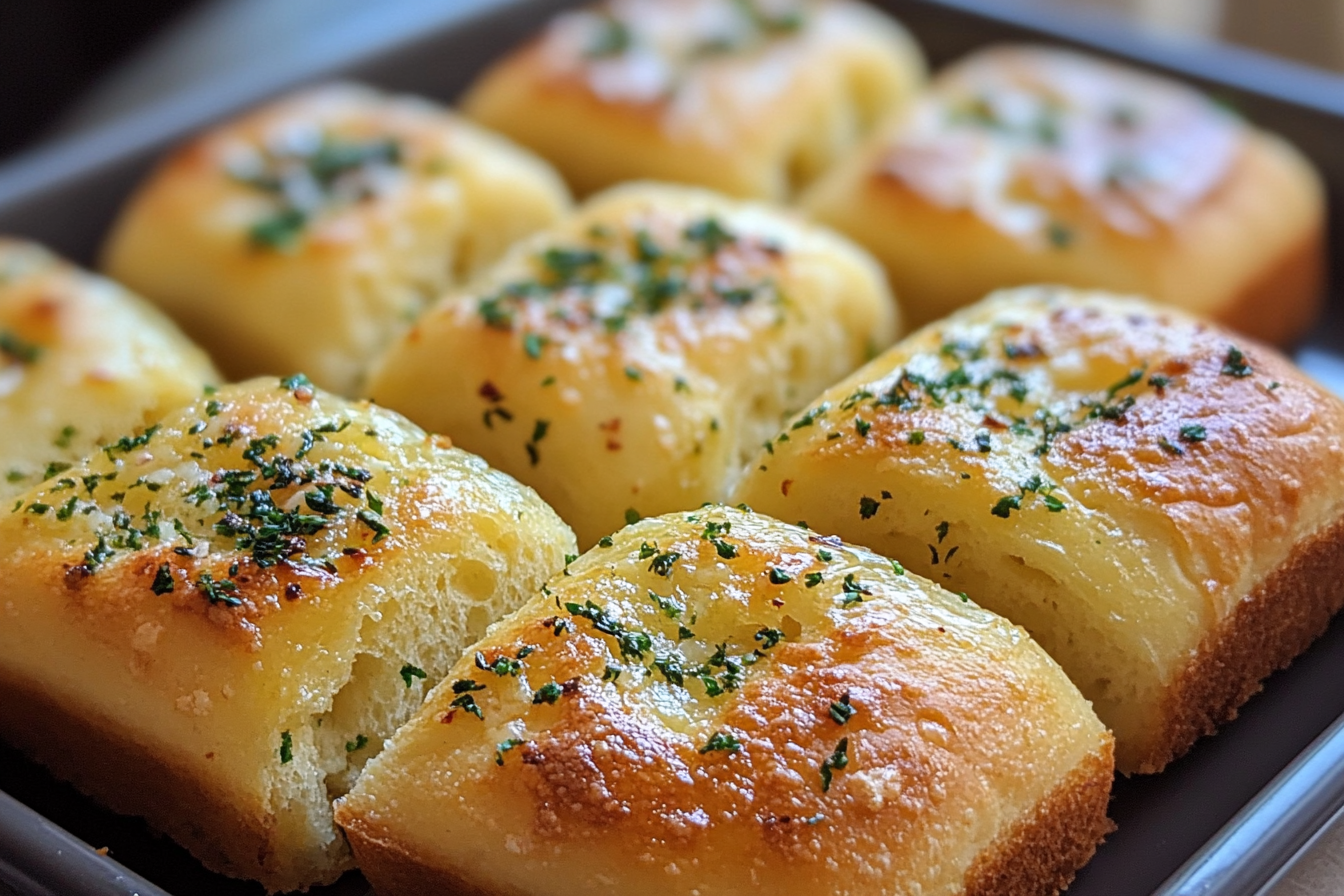Garlic bread is a timeless dish that combines simplicity with rich flavor, making it a favorite in cuisines worldwide. Its appeal lies in its versatility—whether served as a side, appetizer, or snack, it rarely disappoints. But what is the best combination for garlic bread? This question has inspired countless variations, each with its unique twist.
The foundation of garlic bread is straightforward: bread, garlic, butter, or olive oil. However, its endless adaptability allows home cooks and chefs to consider numerous ingredients and techniques. From experimenting with different cheeses to adding aromatic herbs, the possibilities are nearly endless.
In this article, we’ll examine the key elements that make garlic bread extraordinary, how to boost its flavors, and how to craft versions that suit every dietary preference.
Key Components of Garlic Bread
The backbone of any great garlic bread starts with a few essential components. Mastering these insures a delicious result every time.
- Bread: A soft baguette or crusty sourdough are popular choices. For a lighter texture, opt for Italian or ciabatta bread.
- Garlic: Fresh garlic is key for authentic flavor. Grate or finely mince it for even distribution.
- Fat Base: Butter or olive oil adds richness and insures a crispy crust. Butter provides creaminess, while olive oil imparts a slightly fruity undertone.
- Seasonings: Salt and black pepper increase the overall taste.
What is the best combination for garlic bread? The answer lies in balancing these core ingredients to suit your taste.
Improving Garlic Bread with Cheeses
Cheese is a game-changer for garlic bread, elevating it from simple to indulgent. The best combinations often include a mix of mild and sharp flavors.

- Mozzarella: Offers a gooey, stretchy texture perfect for creating that melted effect.
- Parmesan: Adds a nutty, salty profile and crisps beautifully under heat.
- Cheddar: Ideal for bold flavor lovers, especially when paired with spicy garlic butter.
- Goat Cheese: For a creamy and slightly tangy twist, use as a topping after baking.
To make the best combination for garlic bread, consider blending these cheeses. For example, mozzarella’s softness pairs well with the sharpness of parmesan, creating a dynamic taste profile. Mixing cheeses, like combining mozzarella’s melt with parmesan’s crispness, creates a delightful flavor profile. For more on pairing bread with unique elements, check out our article on avoiding sourdough mistakes.
Adding Herbs and Spices
Herbs and spices are key to infusing garlic bread with depth and complexity. By experimenting with these, you can create a signature flavor.
Popular Herbs:
- Parsley: A classic choice for its fresh and mild flavor.
- Basil: Adds a sweet, peppery undertone.
- Thyme: Provides an earthy and slightly lemony flavor.
Must-Try Spices:
- Red Chili Flakes: Introduce subtle heat for those who enjoy spicy food.
- Paprika: Adds color and a smoky edge.
- Oregano: A quintessential Italian herb that complements garlic bread beautifully.
The best combination for garlic bread might include parsley and oregano for an authentic Italian feel or a sprinkle of chili flakes for an added kick.
Best Pairings for Garlic Bread
Garlic bread pairs beautifully with a variety of dishes, enhancing any meal with its buttery and garlicky profile. So, what is the best combination for garlic bread when it comes to serving it alongside other foods?
- Soups: Tomato basil soup or creamy mushroom soup complements garlic bread perfectly.
- Pastas: A classic pairing with spaghetti Bolognese, fettuccine Alfredo, or lasagna.
- Salads: Caesar salad or a fresh garden salad balances the richness of garlic bread.
- Dips: Marinara, garlic aioli, or spinach artichoke dip are excellent choices for snacking.
Experiment with these pairings to find your ideal combination.
Vegan and Gluten-Free Options
Creating vegan or gluten-free garlic bread is simpler than ever, thanks to the variety of substitutes available.
Vegan Alternatives:
- Butter Substitute: Use plant-based butter or olive oil for a vegan-friendly fat base.
- Cheese Substitute: Nutritional yeast adds a cheesy flavor, or use vegan mozzarella for a melty effect.
Gluten-Free Choices:
- Bread Substitutes: Opt for gluten-free baguettes or flatbreads, which are available in most stores.
- Flour Mixes: If baking from scratch, use a gluten-free flour blend to create your bread base.
Combining vegan butter, nutritional yeast, and gluten-free bread offers one of the best combinations for garlic bread that accommodates dietary restrictions.
Cooking Techniques for Perfect Garlic Bread
The way you cook garlic bread can dramatically impact its texture and flavor. These techniques assure a perfectly cooked loaf every time.
- Oven-Baked: Preheat to 375°F (190°C). Bake garlic bread for 8-12 minutes until golden and crispy.
- Grilled: For a smoky touch, grill over medium heat for 2-3 minutes on each side.
- Stovetop Skillet: Use a non-stick pan and cook on medium heat for 3-5 minutes.
- Air Fryer: This quick method crisps the edges beautifully in just 6-8 minutes at 350°F (175°C).
Each method offers unique results, allowing you to experiment and discover the best combination for garlic bread in terms of cooking style.
Presentation and Serving Ideas
The presentation adds a final touch to the garlic bread experience. Whether it’s a casual family dinner or an elegant gathering, serving garlic bread stylishly hoists the meal.

- Slices on a Wooden Board: Arrange evenly for a rustic look.
- Basket Lined with Cloth: Keeps the bread warm and adds charm.
- Garnish with Fresh Herbs: Sprinkle chopped parsley or basil for visual appeal.
- Serve with Dipping Sauces: A trio of marinara, garlic butter, and pesto can create a sophisticated spread.
These serving ideas highlight not only the bread’s flavor but also its versatility. Pair them with the best combinations of garnishes and dips for an unforgettable dining experience.
Crafting garlic bread that delights the senses involves balancing its key elements, exploring flavors, and mastering techniques. With endless opportunities for customization, you can discover what is the best combination of garlic bread for your palate and occasion.
Health Benefits of Garlic Bread
Garlic bread, a beloved side dish, offers more than just its delightful taste. In fact, the health benefits of garlic bread stem primarily from its core ingredient: garlic. Notably, garlic has long been known for its medicinal properties, thanks to its high concentration of allicin.
- Rich in Antioxidants: To begin with, garlic contains antioxidants that help combat free radicals, thereby reducing the risk of chronic diseases.
- Supports Heart Health: Furthermore, regular consumption of garlic can lower cholesterol levels and improve blood circulation.
- Boosts Immunity: Additionally, garlic’s antimicrobial properties help strengthen the immune system, keeping common illnesses at bay.
- Improves Digestive Health: Lastly, the fiber in garlic bread, especially when made with whole-grain bread, aids digestion.
However, it is important to note that the healthiness of garlic bread depends on its preparation. For instance, opting for whole-grain bread and minimizing butter or oil can maximize the benefits while keeping calories in check.
For insights into the nuances of sourdough, consider our guide to sourdough garlic bread, which dives deep into the bread’s versatility.
Regional Variations of Garlic Bread
When it comes to the best combination for garlic bread, the answer often lies in exploring its regional variations. Indeed, from classic Italian styles to global twists, garlic bread adapts beautifully to local cuisines.
- Italian Garlic Bread: Known as bruschetta or fettunta, this version often uses toasted ciabatta drizzled with olive oil and topped with fresh garlic.
- French Variations: Similarly, the French baguette is slathered with garlic butter and parsley, then baked for a crispy finish.
- Indian Twist: On the other hand, this variation incorporates spices like coriander and chili flakes for an extra kick, served with curries or soups.
- American Style: Meanwhile, the American version is typically softer, made with thick slices of bread, and often includes cheese for a richer flavor.
- Middle Eastern Garlic Bread: Lastly, pita bread infused with garlic, za’atar, and olive oil offers a unique option.
As a result, each region’s approach to garlic bread brings a unique blend of flavors, thus answering the question of what is the best combination for garlic bread with endless possibilities.
Tips for Storing Leftover Garlic Bread
Leftover garlic bread can still be just as delicious when stored properly. To assure it maintains its freshness and flavor, follow these practical tips:
- Wrap Tightly: First and foremost, use aluminum foil or airtight plastic wrap to prevent air exposure.
- Refrigeration: Next, store the bread in the refrigerator if you plan to consume it within 2-3 days.
- Freezing: Alternatively, for longer storage, freeze the garlic bread. Be sure to wrap it tightly in foil and place it in a freezer-safe bag.
Reheating Tips:
- Preheat your oven to 350°F.
- Then, place the bread directly on the oven rack for a crispy texture.
- Avoid using a microwave, as it can make the bread soggy.
By following these tips, you can assure that your garlic bread remains as delicious as when freshly made.
Customizing Garlic Bread for Special Occasions
When considering what is the best combination for garlic bread during celebrations, customizing it for special occasions can truly boost any gathering.
- Holiday Themes: For instance, add dried cranberries and rosemary for a festive touch. Alternatively, use green and red bell peppers for Christmas-themed bread.
- Cheese Lovers: For cheese enthusiasts, incorporate different cheeses like mozzarella, cheddar, or parmesan. You can also create pull-apart garlic bread with cheese-filled pockets.
- Spicy Variations: Additionally, mix crushed red pepper flakes or jalapeños into the garlic butter, and pair it with a spicy marinara dipping sauce.
- Gourmet Touches: Finally, drizzle with truffle oil or sprinkle with fresh herbs like thyme. Using artisan bread adds a more sophisticated presentation.
Ultimately, tailoring garlic bread to the occasion insures it becomes a memorable addition to any table.
FAQs
- What is the best combination for garlic bread?
The best combination often includes freshly baked bread, high-quality garlic butter, and optional toppings like cheese or herbs. However, regional preferences offer endless variations. - Can garlic bread be made healthier?
Yes, it can. For example, use whole-grain bread, reduce butter, and incorporate olive oil. Adding fresh herbs also increases flavor without extra calories. - How long does garlic bread last?
Properly stored garlic bread lasts up to 3 days in the refrigerator or 2-3 months in the freezer. - What are some creative ways to serve garlic bread?
You can use it as a base for bruschetta, serve it alongside soups or salads, or pair it with dips like hummus or marinara. - Is garlic bread gluten-free?
Traditional garlic bread contains gluten, but gluten-free alternatives using almond or rice flour are available. Choose gluten-free breads or bake from scratch using a gluten-free mix. For bread lovers, sourdough may also be a healthier alternative, as detailed in our piece on weight-friendly sourdough.
Garlic bread—a universally loved dish—offers versatility, flavor, and even health benefits when prepared thoughtfully. Whether exploring regional variations or discovering what is the best combination for garlic bread, the possibilities are truly endless. In any case, whether you’re savoring it as a side or customizing it for a special occasion, garlic bread remains a timeless classic that continues to delight across cultures and cuisines.

